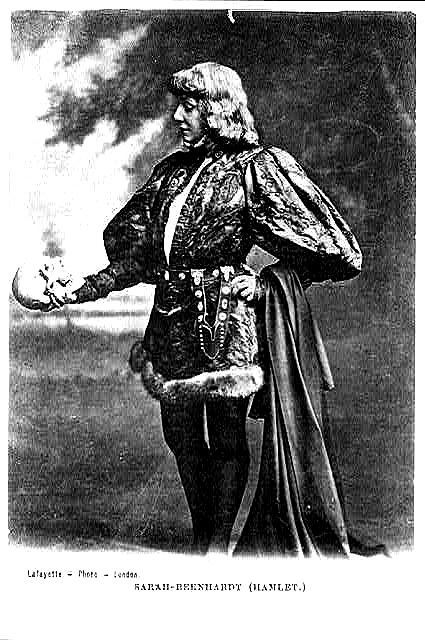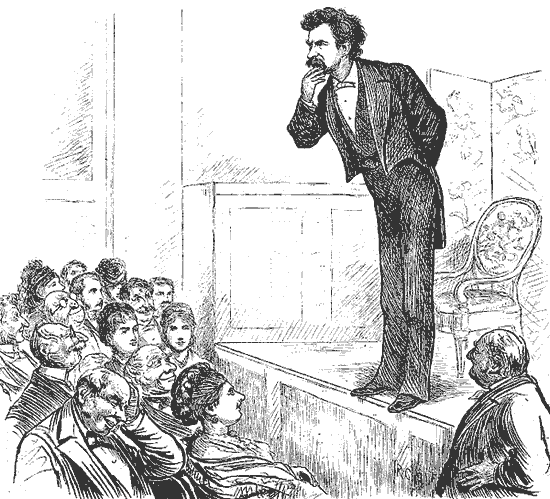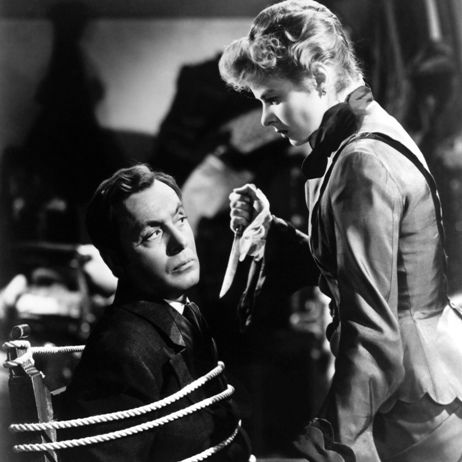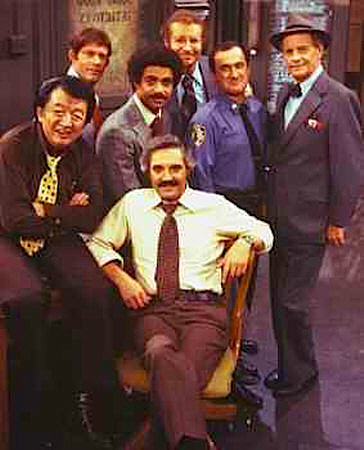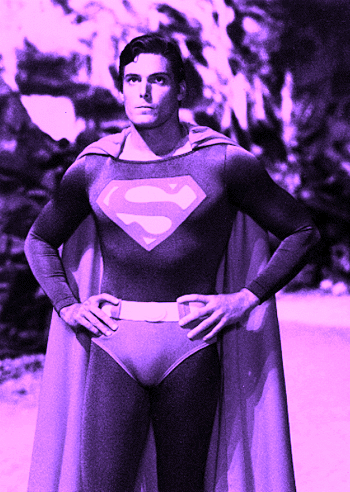Are you still palpitating over that false suspense I managed to build up by the end of yesterday’s post, campers? Or is that heavy panting I hear all of you who are planning to give verbal pitches this summer tumbling onto my virtual doorstep, breathlessly eager to begin our long-anticipated Pitchingpalooza bright and early tomorrow?
Well, it probably won’t be bright and early, unless you are prone to measure such things by moonrise, rather than sunrise; tomorrow is going to be a rather full day. But I shall be launching our latest ‘Palooza, never fear.
“Um, Anne?” the more pacing-minded among you murmur, tapping your watches meaningfully. “Is it my imagination, or did you just extend the false suspense about today’s promised professional readers’ pet peeve by another two whole paragraphs by the simple expedient of digressing into another topic?”
Quite right, pace-minders — and you lengthened it by another paragraph through pointing it out. Now, I’m stretching it to four. Whee! We could keep this up for hours.
But we won’t, because we’ve all gotten the message by now, right? When our old pal, Millicent the agency screener, picks up a page 1, she expects the story (or argument, in the case of nonfiction) to get going right away. When the opening lines dither, evade, and generally avoid leaping right into the meat of the story, she has been known to become just a trifle impatient.
“What is this story about?” she fumes over her latte. “And why isn’t this writer getting on with it?”
Certainly an understandable reaction — and if it isn’t, I can only advise you to go back and read the first four paragraphs of this post again. Perhaps it’s the circles in which I move, but personally, I’ve never met a Millicent — or agent, editor, or contest judge, for that matter — who didn’t share this preference for a book’s opening to get on with it, already. Rarely, if ever, does one hear a professional reader say, “I liked that book, but do you know what would have made it better? A slower page 1. Heck, it would have benefitted from not beginning the central story at all until, oh, page 12 or so.”
I bring this up not only because a page 1 that drags is very frequently enough to trigger rejection — yes, even if the writing that lulls the reader along is beautifully constructed — and this will be my last post in our long-lingering Pet Peeves on Parade series. No, I’ve treated you to this last-minute admonition as a segue into one of the most important rules for a revising writer to remember: just as each authorial voice is individual — good authorial voice, anyway — so is each writer’s pattern of problems. Some very talented writers just can’t manage to get their stories started until page 34; others use and in every other sentence, and still others are purely incapable of remembering the difference between there, they’re, and their. Some rechristen their characters every thirty pages, then forget to go back and change earlier names; some meant to do background research on their protagonist’s mother’s job as a beekeeper, but never seemed to get around to it.
Yes, falling prey to any or all of these tendencies could result in Millicent’s shouting, “Next!” over your submission. You could waste endless energy worrying about that outcome. But rather than fearing her ire or resenting the professional reader’s notoriously sharp eye, may I make a suggestion for a better use of your time? Why not devote yourself to learning what your personal writing patterns are, and figuring out which ones you like enough to keep?
After all, there is no secret formula for writing success: what works for one story will be appallingly inappropriate in another, and vice versa. A thoughtful writer often experiments with a number of different voices, literary devices, and writing styles before settling on the best fit for her book. That’s healthy and a necessary part of a good writer’s learning process — hey, nobody is born knowing every craft trick in the book — but it’s vital to get into the habit of re-reading one’s own manuscripts (ideally, IN THEIR ENTIRETY, IN HARD COPY, and OUT LOUD, of course) with an eye to figuring out which of those experiments are worth incorporating into the book’s overall voice.
Why? Chant it with me now, those of you who have been intrepid enough to follow this series all the way through to the bitter end: because the hallmark of a really good authorial voice is consistency.
That’s not going to happen all by itself, you know — but you’d be surprised at how many submitters seem to act as though it would. As Millicent would be only too happy to tell you if you take her out for a latte (you think it’s easy to stay awake through all of those slow openings?), submissions and contest entries that begin in one voice and switch to another 2, 10, or 100 pages in are almost as common as manuscripts that have no distinctive voice at all.
It may seem self-evident, but in order to clarify your authorial voice or make it consistent across a manuscript, you’re going to need to recognize what it is. How are you going to know what’s good about your writing if you don’t read it? And reread it with each subsequent draft? Not only to catch your personal pattern of mistakes, but to learn what you sound like at your best.
“That’s a lovely sentiment, Anne,” the clock-watchers we met above chime in, “and I’m sure it’s practical advice, well worth heeding. But haven’t you also just distracted us from the fact that you STILL haven’t filled us in on the identity of the Millicent-baiter you teased us about on Monday? Jeez, Alfred Hitchcock himself would have revealed the culprit by now.”
Quite right, pacing-minders. The notorious species of structural repetition that causes professional readers to gnash their teeth and mutter under their breath is — wait, Millie, put down that ice pick! Help! Hel…
Just kidding. You watch-tappers didn’t think you were going to walk away unscathed after the Hitchcock crack, did you?
Actually, one eagle-eyed reader delved into her own manuscript and diagnosed this dreaded form of repetition for herself. Kudos to intrepid Anne A. for bringing it up in the comments a couple of months back:
I’d been looking back at my writing and trying to get rid of my characters’ excessive nodding, shrugging, and looking…especially looking. I’m having a lot of trouble with the looking.
I’ve found that I tend to use looking as a cue in the dialogue for whom a particular phrase is targeted; that is, there are four or five characters standing around and if one character says something directed specifically to another (e.g., “Can you fight?”), I have the speaker look at the target first. I’m finding these terribly difficult to get rid of, because without them the conversation makes little sense.
Any advice on how to handle this? It appears I cycle through, in decreasing frequency: “looked to”, “turned to”, “said to”, and direct address by name. I have a terrible feeling that all of these sound far too repetitive.
We have a winner: looked is one of the most frequently repeated words in manuscript submissions. If I had a nickel for every time I had spotted look, watch, saw, etc. on the manuscript page, well, I’d have a heck of a lot of nickels.
I’m not talking about enough to buy my own publishing house, mind you. Don’t be ridiculous. I’m talking about enough nickels to build a publishing house from sub-basement to rafters entirely out of the things.
Why is look so pervasive? Well, aspiring writers rely upon it, and upon vision-related verb phrases in general, quite heavily, and not always because most human beings glean most of their information about the world around them through their eyes. Often, characters — particularly protagonists — will look things as a means of introducing those things into the narrative. Essentially, the character’s eyes act like a laser pointer, directing the reader’s attention someplace specific. Lookee:
“Oh, I give up,” Albert said crossly. “I’m tired of trying to find that last Easter egg. It can rot, for all I care.”
Sharon cast her eyes around the room, taking in the disordered bookcase, the emptied-out desk drawers, and the overturned couch. She saw no trace of an eggshell of any sort.
Effectively, Sharon is acting as the reader’s eyes in this passage: she moves her eyes, and we are shown objects. Although she is acting, she is passive; she’s not commenting upon those objects — say, drawing the conclusion that Albert is not a particularly well-organized searcher or that the hotel’s maid is likely to find his pastime annoying — nor is she changing the situation through doing anything like knocking over a bookcase herself. She’s not so much advancing the scene as allowing herself to be used as a narrative device.
That’s good news for the self-editor, believe it or not. Instead of showing us the room via a seeing-eye Sharon, the reviser can radically reduce the number of looking references by simply showing what is in the room. That would free up Sharon to engage in activities of her own.
Albert sat in the midst of chaos of his own making. He had disordered the bookcase, emptied out several well-packed desk drawers, and upended the couch. “Oh, I give up. I’m tired of trying to find that last Easter egg. It can rot, for all I care.”
“And I’m tired of cleaning up after you.” Slowly, Sharon withdrew a brace of pistols from her fashionable purse. “We duel at dawn. The maid has offered to be my second.”
Another popular use for looking verbs is to remind the reader from whose perspective she’s approaching the story. This is particularly common in first-person or tight third-person narratives. As in:
I looked at the beautiful blue sky and the hopeful buds on the green trees; they made me sad.
That’s one way to alert the reader to the existence of the buds on the trees and the beauty of the sky — which is, we are told explicitly, blue, as opposed to all of those other colors beautiful skies are always sporting — but it’s not the only narrative possibility, and usually not the most imaginative one. It also slightly blurs the author’s intention: is the reader supposed to concentrate upon the fact that the trees are budding hopefully, or the fact that our narrator saw the buds and projected hope onto them?
Even if the image hitting the narrator’s cornea actually were the most important aspect of this particular sentence — in this example, it isn’t — often, the point of the protagonist’s looking at things is not the action itself, but to alert the reader that the objects being seen exist. Unless this device is used very sparingly, though, most readers will tire pretty quickly of being told over and over again that the protagonist is — stop the presses — seeing or noticing everything around her.
Hard to blame the reader for that, you must admit. From his point of view, it’s self-evident: the object is present in the environment, so naturally, the protagonist sees it. So?
Millicent’s reaction, predictably, is quite a bit less forgiving. “Stop telling me over and over that the protagonist is seeing things!” she will mutter, reaching for her third latte of the afternoon. “You don’t need to keep reminding me of the narrative perspective!”
So what’s a reviser to do with this type of Millicent-annoying look? Cut ‘em without mercy. With a little careful planning, it’s almost always possible simply to have stimuli external to the protagonist just show up, without reminding the reader that the players in the scene have seen them or having the protagonist acknowledge their existence.
Fringe benefit: because this approach encourages the things in question to be more active, the result is often a more vibrant narrative. Take a peek:
The sun shone in a cloudless sky, sending a caressing warmth to encourage the hopeful buds on the green trees. Their very exuberance made me sad.
Anne A’s concern sounds like combination of these two types of looking patterns, a mélange that used to be quite widespread in YA and many categories of genre fiction. In this combo, not only do the characters’ eyeballs serve as the narrator’s means of calling the reader’s attention to something in the physical environment as a sort of, “Hey, you — notice at that!” substitute — those busy, busy peepers also provide the transition between description (often presented as the result of observation) and the next set of actions.
What might that look like on the page, you ask? Let us turn to our next example. While I’m at it, I’ll toss in a little name repetition, since Anne A. mentioned that it was one of her personal bugbears.
Helene looked around the room. Not much there; the occupants must have moved out in a hurry. Suddenly, she saw a glint of silver on the mantelpiece.
She turned to Karen. “Look, Karen! Could that be Aunt Monica’s long-lost broach, the one we have been seeking for hours? If it is, maybe we will be able to figure out how to open its secret compartment and find the combination to the wall safe our beloved aunt told us three times a week throughout our collective girlhood was stored there.” She looked to her cousin for confirmation. “Well? Is it her broach?”
Karen picked up the round pin, examining it. “Possibly, Helene. Strange…”
Helene looked at her cousin expectantly. “What’s strange?”
Karen glanced nervously back toward the door. Did she hear movement out there? “Oh, that the search party, the militia, and the bloodhounds would have missed its being in such an obvious location.”
As you may see — looking verbs are addictive, aren’t they? — it’s not difficult for this type of looking to turn into Hollywood narration, dialogue in which the speaker tells the hearer things both parties already know, purely to convey the information to the reader. Like most dialogue plagued by this phenomenon, this passage benefits from trimming it. All of that visual activity could easily go, too, making room for some more revealing details or more action. (Why didn’t Helene pick up the darned broach herself, if she was so interested in it?) Also, if we really put our editorial minds to it, we could probably stop our heroines from squawking their names at each other constantly like hyacinth macaws.
The room’s dark wood paneling emphasized how quickly the former occupants had decamped. Dust outlines showed where a sinuously curved sofa, an ornate-footed chair, an old-fashioned two-sided partner desk had rested for decades. Only the mantelpiece seemed to have been cleaned within the last year. Silver glinted against the mahogany.
“Aunt Monica’s broach!” She dashed across the room, but Karen beat her to it.
Her cousin ran her fingertips across the polished surface. “How could it be this shiny, if it’s been lying here for a year?”
Helene completed the thought: “And why would everyone else who’s traipsed through here miss it? This was planted!”
Another tendency to keep an eye out for (oh, you think it’s easy to keep coming up with these?) is looking used as a stand-in for other, more interesting activity. It’s indigenous to recently revised manuscripts, as a means of identifying speakers without cluttering up the dialogue with all of those tag lines that graced the first draft. Unfortunately, not every alternative to he said makes for particularly scintillating reading.
Art looked askance at his adopted brother. “You’re not afraid, are you, Kay?”
Kay glanced at the dragon breathing fire nearby. Surely, any sane human being would be afraid. “Not if you will hand me that sword over there on your right. No, farther, next to the tumbledown shack in which that strange old man lives. That’s it, right next to the bronze chicken our grandmother smelted in her dotage. Oh, now you’ve gone too far. Don’t you see it there, beside that gently rippling stream?”
Art recoiled at the sight of it. “You mean the sword stuck in the stone?”
Here, the narrative falls into another Millicent-annoying trap: presentation of the physical environment not via explicit description, but by talking about it as though the narrator (or in this case, the character Kay) and the reader were watching a film of the scene together. Rather than giving us enough detail to be able to picture it as the writer imagines it, we’re left to guess what type of landscape could possibly contain all of those disparate elements.
And why might that narrative choice irritate Millicent? Sing it out loud and clear, campers: it’s the writer’s job to convey a sense of place, not the reader’s job to fill in descriptive details.
Another extremely common use of looked is as a substitute for showing emotional reactions. As any Millicent who has been at it for a while knows to her cost, aspiring writers just love having characters look at one another instead of evincing a more revealing response to something that has just happened.
All of a sudden, the wind chime over Violet’s left shoulder began ringing violently; Llewellyn’s chair seemed to be slipping sideways beneath him. They looked at each other.
“What’s happening?” Violet cried.
Doesn’t add all that much to the scene, does it? That’s because from the reader’s perspective, the mere fact that Violet and Llewellyn chose that moment to train their eyeballs on each other isn’t all that illuminating. Described this flatly, it’s such a generic act that mentioning it doesn’t either advance the plot or reveal character. It begs the question: how did they look at each other? Why did they look at each other?
Okay, so that was two questions. Here’s a third: is there something else that one or both of them could do or say here that would do a better job of advancing the plot and/or revealing what these people are thinking or feeling in this particular moment?
And, of course, there’s the ever-popular self-sufficient glare:
Not looking where he was going, Armand tripped over Patrice’s extended feet. She shot him a look.
Again, what kind of look? What did she intend it to convey, and was it in fact an accurate external representation of her internal mental processes? And while we readers are asking so many questions, why on earth didn’t the writer save us all this trouble by coughing up a substantive description of a meaningful response in the first place?
Be on the lookout, so to speak, for versions of she looked away, a sentence widely used as shorthand for a character’s conscious attempt to avoid conveying emotion to another character. While flesh-and-blood people do actually look away from one another from time to time, and for that very reason, this phrasing, too, can start to feel pretty redundant if characters do it very often.
At the risk of giving away a trade secret, looking away is also not usually the most interesting reaction a character can have to a stressful situation. Frequently, this action is a drama-killer, a means of allowing a character to avoid a direct confrontation. That may be desirable in real life, but since Millicent likes to see conflict on every single page of a novel or memoir — you knew that, right? — do you really want to squander a golden opportunity for injecting more of it into your story?
In short, you’re going to want to take a close look at all of those looks, evaluating on a case-by-case basis. Each time it appears, ask yourself: is this an effective way to convey the meaning I want to the reader, or is this just shorthand? Is it a stand-in for something else, a more revealing action, perhaps, or more interesting possibility? Would the plot or characterization would benefit from a different kind of sentence?
What you should most emphatically not do, however, is simply do a search for the word and cut every use indiscriminately. You’re going to want to exercise your judgment — always bearing in mind, of course, that the reader cannot read your mind, and thus may not interpret shorthand in quite the way you intended. You can’t blame her for that: since all she knows about the story you are telling is what the narrative shows and tells her, if you don’t fill in the details, she has to rely upon her imagination.
Don’t make me start the chanting again. You know the tune by now, right?
Remember, too, that what might work perfectly well in an individual sentence may well become a distracting pattern over the course of a paragraph, page, or even scene. Look is a sneaky one; it is used in so many context to mean so many things. To sharpen your eye to its many means of imbedding itself in text, let’s take a gander at few frolicking in their natural habitat.
He looked at me passionately. “But I want you to marry me, Mary!”
Quickly, I looked down at the fringe decorating my skirt. “I think you should go, Didier.
“Go?” He gave me a look of disbelief. “Didn’t you hear what I just said?”
I looked up. “Didn’t you hear what I just said?”
Taken individually, each of these uses of look is perfectly legitimate. But the problem here isn’t just the word repetition — it’s that looking is acting as a stand-in for a whole lot of potentially interesting human interaction. Over and over and over again.
Don’t look away — we already know what do in this situation, right? When confronted with characters merely looking in response to stimuli, we ask: could they have more character-revealing (or situation-revealing) responses?
The possibilities are endless, of course — which is precisely why I’m a big fan of this particular revision strategy; it can open a simple scene up in some fascinating ways. For instance:
He kissed my hand passionately. “But I want you to marry me, Mary!”
I abruptly became absorbed in studying the fringe decorating my skirt. “I think you should go, Didier.”
“Go?” His tone implied that I’d just asked him to leap off a fifty-foot cliff. “Didn’t you hear what I just said?”
So much for sparing his feelings. “Didn’t you hear what I just said?”
Is everyone comfortable with the prospect of tackling all of those looks in context, retaining some, and coming up with interesting and creative substitutes for others? Good. Now that you’ve started thinking about revising with your reader’s reaction in mind, let’s go back and apply the principles we’ve been discussing to the problem of proper noun repetition in a manuscript.
Oh, did you think that you were through with practical examples, because we were so close to the end of this series? Not a chance — over the past few weeks, we have established a method for dealing with word repetition. Now that we have added the last tool, placing ourselves behind the reader’s spectacles in order to figure out whether the over-used word in question is serving the narrative well, to our writer’s tool belt, aren’t you just dying to trot out the whole set of wrenches?
I’m going to take that look you’re all giving me as a yes. Perhaps if I’m really lucky, you’ll exchange glances. Maybe even meaningful ones.
Suppose for a moment that in mid-revision, you have suddenly become overwhelmed with doubt: have you been over-using proper names? Rather than panic in the face of such a dreadful possibility, you know precisely what to do: first, ascertain just how many of the darned things there are in your manuscript, so you may see just how serious the problem is — and where to begin to attack it.
So you, wise soul, print up a hard copy of your manuscript, pull out your trusty highlighter pens, and mark every time a character’s name appears, dedicating one color to each character. After highlighting up a storm for a chapter or two, you go back and flip through the pages. If a single color appears more than a couple of times on a page, you know that you might want to see where you could trim.
This test, which can be used to diagnose any suspected repetitive pattern in a manuscript, will reveal the most about Millicent’s probable reaction if you begin marking on page 1, of course, rather than at some random point in Chapter 12. If you can only find time to do a few pages, though, you might not want to start marking on page 1. A good, quick check on your name-usage habits is to highlight a two-person dialogue between major characters from the middle of the manuscript.
Why a two-character scene, you ask? See if this pattern seems at all familiar:
”I’ve never seen that giant centipede before,” Tyrone lied. “It just crawled into the house, Mom.”
Angela placed her fists upon her ample hips. “I suppose it opened the back door by itself?”
“It certainly has enough legs to do it,” Tyrone said, examining it. “Or it could have crawled through the keyhole.”
“Next you’ll be telling me that the cat is the one who has been opening the kitchen cabinets,” Angela retorted.
“I’ve seen her do it!” Tyrone insisted.
Angela placed her hand upon his head. “Tyrone, I hate to break it to you, but cats don’t have opposable thumbs. Neither do centipedes. So unless you’re harboring a chimpanzee I don’t know about, I’m going to assume that human hands did all these things.”
The boy cast a nervous glance at his closet door; did Mom know about Archie? “If you say so.”
Did you catch the patterns here? If you immediately said, “By gum, a skimming reader’s eye might mix up Angela and Archie, since they both start with the letter A,” give yourself a gold star for being able to remember that far back in this series. Take another star out of petty cash if you also murmured, “This writer is identifying speakers far, far more often than necessary. I wonder if the same pattern persists throughout the manuscript?”
In this excerpt, the pattern is clear, right? In case those baleful looks you’re giving me mean no, let me ask a follow-up question: how do we know that this scene doesn’t really require this many tag lines?
After the first set of exchanges, there really isn’t any doubt about who is speaking when, is there? So why does the reader need to be reminded so frequently who is who, when the speeches are alternating in a predictable rhythm?
The over-use of tag lines is quite pervasive in submissions, and for good reason: like over-abundant proper names, aspiring writers often believe that they reduce confusion. But to professional eyes, the author of the example above has apparently invented unnecessary opportunities for repeating her characters’ names.
Be on the lookout, too, for frequent use of relational terms as substitutes for names: her mother, my brother, her boss. Often, writers who lean heavily upon name usage will pepper their manuscripts with these, too — and again, physically marking them in the text is generally the best way to figure out if there’s too much pepper in your manuscript.
Okay, so that was a bad joke, but it was intended to soften a hard reality: until repetitions of these phrases are actually highlighted on the manuscript page, it’s well-nigh impossible for most aspiring writers to understand fully why this particular type of repetition drives the pros mad. Relationship repetition may seem merely descriptive or innocuous to a casual reader, but it reduces professional readers to apoplexy; they read it as the writer’s insecurity about the reader’s caring enough – or not being smart enough — to remember how these people are related.
Speaking of over-reactions: “Criminy,” Millicent has been known to mutter. “Is there a REASON you feel the need to tell me three times per page that Roger is Yvette’s son?” Do you think I have no memory at all?”
Sound at all familiar?
In this instance, I think Millicent has some justification for feeling that the writer is talking down to the reader. Unless you are writing a story that will be published in serial form, as so many of Dickens’ works were, it’s not necessary, and can be downright annoying, to keep referring to a character by her relationship to the protagonist.
Especially when, as often happens, the reader is presented with the relationship from several different perspectives. As in:
Brenda looked up at her mother. “Are you sure he’s dead? Couldn’t it be another false alarm?”
Mona cradled her husband’s blue-tinted face in her wrinkled but bejeweled hands. “You’re thinking of my last husband, Martin, the swimmer. Bert’s not capable of holding his breath this long.”
“I didn’t say he was faking it.” Brenda lifted her stepfather’s lifeless arm, dropped it. “I’m just saying that there’s a big difference between comatose and dead.”
“Fine.” Mona kicked her purse at her daughter. “Root through there until you find my compact, and hold the mirror under his nose. If he’s alive, it’ll fog up.”
“For heaven’s sake!” Millicent will be crying by this point in the manuscript, startling fellow screeners in adjacent cubicles. “If Mona is the mother, OF COURSE Brenda is the daughter! What do you think, I’m an idiot?”
Generally speaking, the formal relationship between two characters, particularly if one of those characters is the protagonist, needs to be mentioned to the reader only once in a chapter, at most. If it’s a significant relationship, it may well need to be brought up only once in the book, unless there honestly are issues of mistaken identity involved.
Otherwise, try giving the reminders a bit of a rest.
While you have your marking pens out, it’s not a bad idea to check your submission pages for other instances of phrase repetition as well. I’m not talking about pet phrases here — come on, admit it: every writer has a few phrases and words he likes enough to reuse with some frequency — but overworked nouns and descriptive phrases. Those have a nasty habit of offending the professional eye, too.
You’d be astonished at how much the repetition of even a single verb in two consecutive sentences, for instance, can make a manuscript seem less interesting. Especially — and this is almost impossible to catch when editing on screen, but genuinely irksome to see on a printed page — if the same word or phrase begins or ends two or more sentences in a row.
If you are clever and professional-minded enough to scan your manuscript IN ITS ENTIRETY, IN HARD COPY and OUT LOUD (gee, where have I heard that advice before?), it will immediately become apparent why: it reads as though the point of the paragraph is to get through the information within it as quickly as possible, rather than to write about it as beautifully as possible.
In a race run amongst the stylish, my friends, even a couple of lines that fall down on the job can cost you a head start. You’re in this to express yourself marvelously: try to be consistent about it, but use your best judgment on a case-by-case basis.
That’s such a pretty thought that I am going to sign off here for the day — and the series. Next time, it’s on to the rigors and joys of pitching. Keep up the good work!


